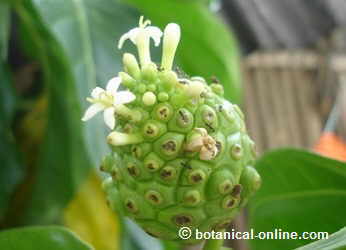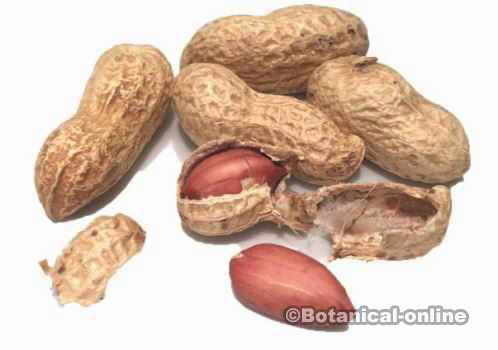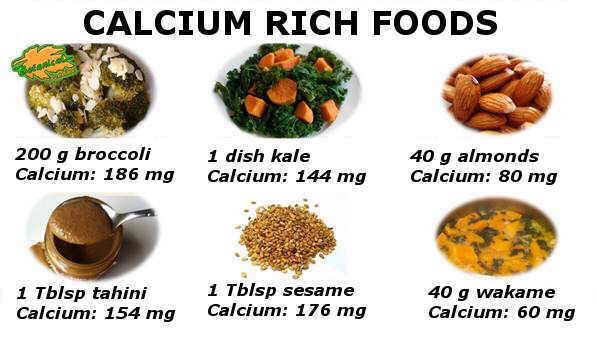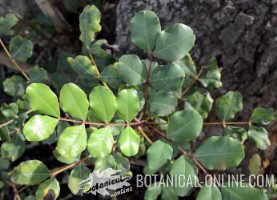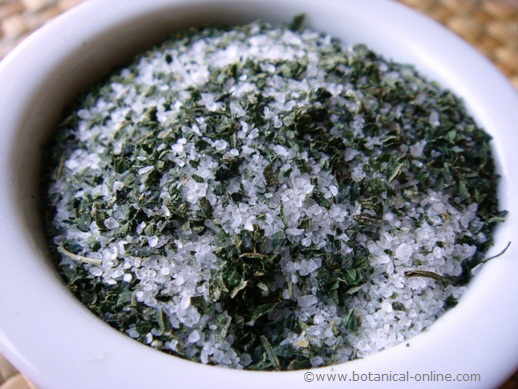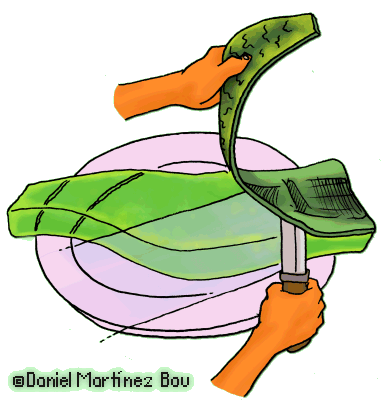Contents
Characteristics of alkaloids
What are alkaloids?
Alkaloids are bitter-taste nitrogen-containing compounds. There are approximately 5000. They are not unique to plants since they are also found in the animal kingdom.
Some of them may be found in the skin of certain animals, such as bufotenin, excreted by toads. This is a batrachotoxin, produced by frogs of the genus Phyllobates, one of the most powerful poisons in the world, especially that one of the Phyllobates terribilis, a species capable of killing 10 men with 1 milligram.
Curiously, this alkaloid also appears in the feathers of the birds of New Guinea Pitohui genre and produces a standstill in the member that touches it. Other alkaloids are produced by small animals such as centipedes, ants, ladybugs, etc.
Alkaloids in plants
Most of the alkaloids, however, belong to the vegetable kingdom, so that 10% of plant species contain some of these compounds.
Sometimes they appear in the whole plant, for example, the yew (Taxus baccata) a tree whose only edible part is the aryl extremely appreciated by the birds. The rest is poisonous.
Alkaloids generally abound around these parts of the plants:
– The leaves: There are many plants with these compounds in greater proportion in the leaves, like tobacco(Nicotiana tabacum) or tea (Camellia sinensis)
– The seeds: Some plants contain alkaloids in seeds, such as strychnine from nux vomica and caffeine that appears in coffee (Arabian Coffea)
– The roots: Sometimes the alkaloids found in higher proportion in the roots, as shown in phytolaccine from pokeweed (Phytolacca americana), the poisonous root of monkshood (Aconitum napellus) Atropine mainly appears in the root of belladona (Atropa belladonna)
– The fruits: Examples of plants with alkaloids in the fruits are found in hemlock (Conium maculatum), or the berries of deadly nightshade (Atropa Belladonna)
Role of alkaloids
It has been much debate about the role played by alkaloids in the plant world without having come to give any conclusive reason. Among the many interpretations, we would have the following:
– Defensive value, these compounds have been considered as a way for plants to protect themselves against the aggression of the animals, which seems to be only partly true because in many cases these products have little effect on them. It is curious, for example, the case of the Colorado beetle (Leptinotarsa decemlineata) whose larvae can feed on leaves of Solanaceae such as tomatoes, potatoes without its dangerous belladonna alkaloids affect them..
– Hormone value: Its role would be equivalent to that undertaken by hormones and comparable to the animal hormone adrenaline. The truth is they usually attain the highest levels in the moments of intense metabolism.
– Allelopathic value: According to this interpretation, plant alkaloids used for positive or negative influence on other related species, or to communicate with similar species or inhibit the growth of others that could be competitive, such as cocaine, caffeine or strychnine do to prevent the growth of other species near them.
How do alkaloids affect us?
Some alkaloids focus their range in a particular part of the body, though many of them can act on several fronts at once. Among those that most affect us, we would include:
– Nervous system: Some exert a stimulating role of the central nervous system (CNS) such as caffeine (coffee and especially in tea), theobromine (cacao) or strychnine (nux vomica) that, in very small doses it is also convulsive. Others, such as scopolamine of henbane (Hyoscyamus Niger) have a calming role, hence they are used in medicine as sedatives. Morphine, an opium derivative which is extracted from the latex of the capsule of the poppy (Papaver somniferum) is the main ingredient of some sleeping pills.
There are also some, such as aconitine (aconite) which, although they are initially stimulating, then they are paralyzing. They can affect all the muscles, causing violent and painful spasms, such as strychnine, which causes severe convulsions leading to death by suffocation or exhaustion. They can also act on certain specific muscles, causing them to dilate, such as scopolamine (henbane) responsible for mydriasis or dilation of the pupil. Others can cause the opposite effect such as eserine from calabar bean (Physostigma venenosum) used in ophthalmology to contract the pupils of the eyes or the digitalis (Digitalis sp) acting on the heart muscle.
– Digestive system: Some are very toxic to the digestive system, causing violent irritation of all gastric mucosa with typical manifestations such as diarrhea, vomiting, etc. Among these, one of the most poisonous are the seeds of castor oil plant (Ricinus communis) that contain the alkaloid ricinine, whose properties have been used as a purgative, but it is extremely dangerous, since a couple of well-chewed seeds can be fatal to a child. Equally aggressive to the stomach is colchicine of autumn crocus (Colchicum autumnale). It should be mentioned those that attack the liver causing liver damage (cirrhosis, hepatitis, cancer, etc.), such as cynoglossine from heliotrope (Heliotropium europaeum).
– Circulatory system: its effect is performed on the circulatory vessels, such as reserpine from Rauwolfia vomitoria lowering blood pressure, so it is used to treat hypertension. Alkaloids that have an opposite effect would be, for example, sparteine of common broom (Cytisis scoparius) which hypertensive properties could be useful to increase the metabolism and encourage the elimination of fluids in people with obesity.
– Respiratory system: Within this section we have alkaloids that have the property of dilating the bronchial tubes allowing an increase in breathing. So, scoparin contained in the flowers of the common broom (Cytisis scoparius) has been used to combat respiratory diseases. Also ephedrine, an alkaloid with adrenaline-like properties produced by different species of the genus Ephedra has been used as a decongestant for the treatment of bronchial asthma and, in addition, because it possesses stimulant properties. The FDA (Food and Drug Directorate in USA) has recently banned its use. Many alkaloids that act on the respiratory system -when they exceed the allowed doses- produce respiratory arrest.
– Psychotropics: Other alkaloids form part of the group called psychotropics, which are those that affect the mind, altering the perception. Among them we should mention:
- Hallucinogens: Which produce hallucinations or disturbances in thinking, feeling or perception in the form of distorted illusions of reality or perception of non-existing realities. Within this section we have strong poisonous drugs as mescaline from peyote (Lophophora williamsii), cannabine from cannabis (Cannabis sativa), harmaline from Syrian rue (Peganum harmala), ergotoxin from ergot (Claviceps purpurea), muscarine from the mushroom Amanita (Amanita muscaria).
- Narcotics: Alkaloids that cause narcosis, that’s to say, they induce to a dreamy state. The are used medicinally as analgesics, but, being so addictive, its use is regulated medically. Within this category, we have opiates such as opium extracted from the latex of the poppy (Papaver somniferum). Morphine, the primary analgesic, is produced from it. Codeine and heroin are derived from the latter.
- Stimulants: They produce a state of euphoria and well-being. Among these we would have well-known alkaloids such as cocaine extracted from coca leaves (Erythroxylon coca), widely used by Andean communities as exhilarating, to combat altitude sickness and allow better performance at work, apart from many other medicinal properties attributed to its users. Another alkaloid within this group is nicotine, that is obtained from tobacco (Nicotiana tabacum) and from most members of the family Solanaceae, an addictive stimulant that also, a deadly poison in low doses. Finally, we have to mention caffeine, an alkaloid present in plants such as coffee (Coffea arabica L.), tea (Camellia sinensis (L.) KUNTZE), mate (Ilex paraguensis), cacao (Theobroma cacao L.); orange tree, (Citrus sinensis (L.) OSBECK), lemon (Citrus lemon (L.) BURMAN f.) It excites the nervous system, increases heart rate and promotes the elimination of urine. Prolonged use and abundant quantities produce excitement, preventing sleep and irritate the gastric mucosa. Caffeine is not very addictive.
![]() More information about medicinal plants.
More information about medicinal plants.

